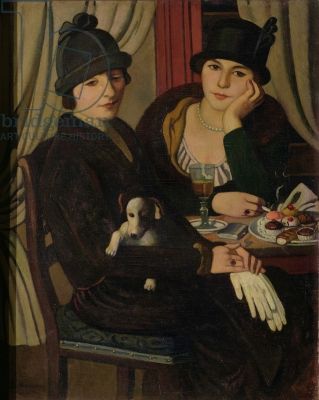Monday
While visiting the University of Ljubljana last week, I interviewed two applicants for the exchange program that Julia and I set up in memory of our oldest son Justin. Both students submitted superb essays, one of which I share today. Nadja Jukic, looking for ways that an older and a younger woman can have a relationship that doesn’t follow traditional lines (say, filial or lesbian), examined the relation between Lily Briscoe and Mrs. Ramsay in Virginia Woolf’s To the Lighthouse.
Nadja believes that the two women long for genuine intimacy but finds such intimacy hard to define:
Was there ever a more ambiguous word in regard to human relationships than intimacy? Intimacy is a word that is in between: in between the unknown and familiar, limitations and openness, friendship and sex.
As Nadja sees it, Woolf is charting new ground through Briscoe’s and Ramsay’s relationship. To make her case, Nadja has to argue against scholars like Ferhat Ordu and Murat Karakaş, who believe that the two women simply represent a historical passing of the torch, from Mrs. Ramsay’s Victorian angel in the house to Lily Briscoe’s “new woman.” Those making such arguments sometimes believe that Woolf bases Mrs. Ramsay on her mother while seeing herself in the struggling artist Briscoe, but Nadja believes the relationship is more than that.
Because female intimacy is so elusive, Nadja first looks at what the Briscoe-Ramsay relationship is not. Disagreeing with Ordu and Karakas, Nadja argues that Ramsay
is not simply “an archetypal imag[e] of domesticity.” In fact, throughout the novel, Mrs. Ramsay doubts her love for her husband, feels used by him, and sees her own life as “something real, something private, which she shared neither with her children nor with her husband.” Similarly, Lily is not just “a symbol for the modern woman,” and the relationship between the two characters, therefore, is not just a clash between an old-fashioned customs and new ideology.
Nadja says that Lily, while she disagrees with Mrs. Ramsay’s matchmaking, still loves being in her presence. In return, Mrs. Ramsay
likes Lily’s independence, even if she doesn’t share the trait. In one passage, Mrs. Ramsay thinks how “[t]here was in Lily a thread of something; a flare of something; something of her own which Mrs. Ramsay liked very much,” even though she adds “but no man would, she feared.”
As Nadja reads it, such passages point to a special kind of female intimacy. Nadja observes that “women in the novel see each other differently from how men see them.”
For example, Mr. Bankes worships Mrs. Ramsay from afar, prompting Lily to observe,
No woman could worship another woman in the way he worshipped; they could only seek shelter under the shade which Mr. Bankes extended over them both.
Lily, by contrast, looks behind Mrs. Ramsay’s beauty to “the perfect shape which one saw there,” and asks, “What was the spirit in her, the essential thing?”
A key passage for Nadja depicts Briscoe leaning on Ramsay’s knee and asking herself about the nature of their relationship. Why does she want “to somehow penetrate the beautiful, often deceptive exterior to get to the secrets she believes are within Mrs Ramsay?” Is it for wisdom? For knowledge? Nadja quotes scholar Laura Collins as she examines the scene:
“Sitting on the floor with her arms around Mrs Ramsay’s knees, close as she could get, smiling to think that Mrs. Ramsay will never know the reason of that pressure,” she wants to understand, decipher Mrs. Ramsay. She is “seeking to absorb and know the older, admired woman” (Collins) as she “imagine[s] how in the chambers of the mind and heart of the woman who was, physically, touching her, were stood, like the treasures in the tombs of kings, tablets bearing sacred inscriptions, which if one could spell them out, would teach one everything.”
Nadja observes,
Already we can see a contrast between the physical touch that is present and a deeper connection that Lily yearns for, but does not know how to achieve. This is why she asks herself: “What art was there, known to love or cunning, by which one pressed through into those secret chambers? What device for becoming, like waters poured into one jar, inextricably the same, one with the object one adored?”
And:
Could loving, as people called it, make her and Mrs. Ramsay one? for it was not knowledge but unity that she desired, not inscriptions on tablets, nothing that could be written in any language known to men, but intimacy itself, which is knowledge, she had thought, leaning her head on Mrs. Ramsay’s knee.
Nadja believes that what Lily ultimately desires is
intimacy itself. This intimacy is not knowledge as an abstract concept, but rather knowledge of the other person. Importantly, it is also unknown to men, which means that it exists only between women. For Lily, intimacy is unity. But she does not yet know how to reach it: “Nothing happened. Nothing! Nothing! as she leant her head on Mrs Ramsay’s knee.”
Nadja is driven by her own desire to understand her desires and finds in literature the most powerful means for doing so. I regret that, by retiring in June, I won’t see what further insights Nadja gets while attending St. Mary’s.


